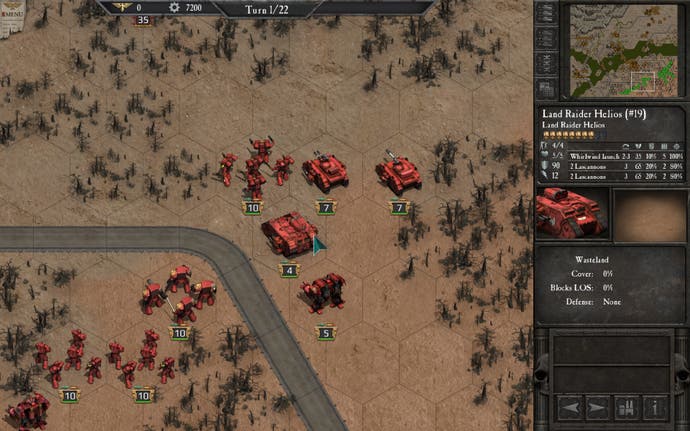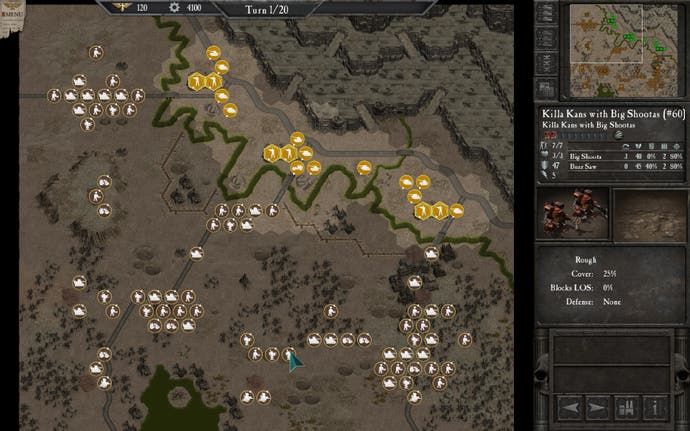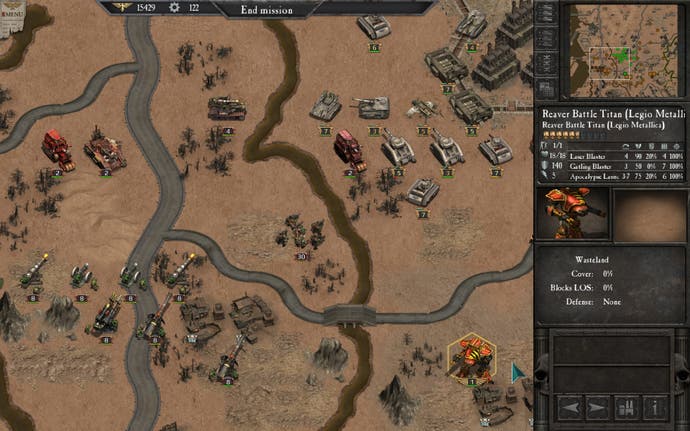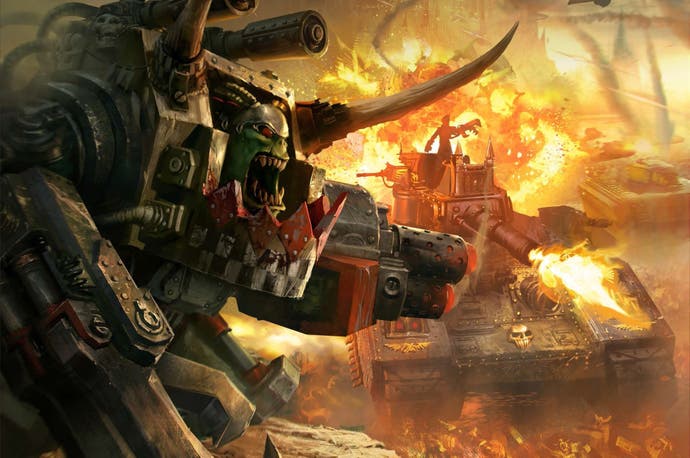Warhammer 40,000: Armageddon review
When two tribes go to WAAAGH!
Given how fertile the Warhammer 40,000 universe is when it comes to epic warfare, its crop of turn-based video games has been stupefyingly infrequent. Yes, Dawn Of War looked the part and was an immensely enjoyable take on capture-and-hold real-time strategy, but for all its bombastic violence and blister pack expansioneering, it was about as authentic a mirror of the tabletop wargame as its first-person shooter stablemate, Space Marine. Remarkably, if you want to go back to when the last proper 40k wargame appeared on PC, you'd need to set your time machine for last century. Needless to say that tor a core subset of 40k grognards, the wait for Armageddon has been just as lengthy and frustrating as that which X-Com fans were forced to endure.
Of course with publisher Slitherine at the helm, Warhammer 40,000: Armageddon was never going to be an Enemy Unknown-style reboot - not that one was ever called for. Its 1999 predecessor, SSI's Rites of War, based on the illustrious Panzer General 2 engine, was seen by many as a gateway game, designed to help bolster declining mainstream interest in PC wargaming rather than an all-out effort to capture the genuine 40k experience. Likewise with Slitherine's Panzer Corps at the heart of Armageddon (itself seen as the natural successor to Panzer General 2), there's more than a sense of deja vu circulating around Armageddon; that by effectively reskinning a previous game - even a very good one like Panzer Corps - some measure of authenticity is lost by default.

Thankfully Armageddon's strategy foundations are solid enough to make up for any indifference shown to the look-up tables of the 40k source material. In line with innumerable tile-based wargames, units are able to move and fight once per turn - subject of course to terrain and weapon range restrictions - with combat resolution dependant on the Attack Strength and Armor Piercing value of each weapon versus a unit's Defense rating. While there are plenty of stats to pore over, the key to unlocking a winning strategy isn't so much about developing a solid and sustainable front line, but in considering the range and mobility of the firepower you can project each turn. As a result there's more than a hint of chess inherent in the game, with infantry acting as pawns and armour as your bishops, rooks and knights (and the vastly overpowered Titans as queens), as you work towards each victory location, hopefully to ensure your limited spread of units lives to fight another turn. Without the need to protect lines of supply, as is typical in most wargames, Armageddon manages to be both fluid and accessible, considerably less intimidating that many of its contemporaries and fundamentally no more complex than your favourite iteration of Advance Wars or Battle Isle - although it's worth pointing out that with only spartan effects to accompany each attack and a complete absence of any unit animations, exchanges are considerably less entertaining to sit through.

While the adapted battle mechanics might be too simplified for some, there is a distinct 40k flavour to be found in selecting and adapting your forces before each battle. The game delights in offering more than 350 unit variations, which can be requisitioned as new or acquired as an upgrade for your existing forces. While that number may seem spectacularly generous, however, the organisation of pertinent unit information is so basic that it invites unnecessary trial and error when selecting the right balance of units. For example there are dozens of tanks to peruse (14 varieties of Leman Russ among them), with no way to reorder them to suit your tactical needs. All you can do is scroll through each while ghosting the cursor across each value. Likewise, on the battle map, there's no right click context menu that allows you to look up detailed unit information - instead, you have to back out to the Purchase screen. It's all rather unnecessary and wouldn't be so painful if some of the units weren't so plainly redundant. For instance there's a Tarantula Anti-Tank unit and a Sabre Gun Anti-Tank, distinct in 40k lore but in Armageddon functionally identical save for a single hit point. Then there are the so-called air units, which rather bizarrely can't exist in the same space as ground units and can't move over hills - which may explain why they can only see two hexes away, compared to some ground units that can see up to three times as far. Baffling.
With mission objectives that invariably require you to take and hold a number of victory locations within a fairly strict deadline, the campaign missions are in themselves pedestrian affairs, so in an effort to liven up the proceedings, missions are interspersed with voiceovers from leaders and field commanders. Most of it is pious posturing from the Imperials and gruff Cockney shouting from the Orks, all delivered with the kind of pantomime enthusiasm one has come to expect of Warhammer 40,000 audio. In short, it does the trick, just about, but is a far cry from from the comparatively abundant FMV-lead storytelling of 1997's Final Liberation.

At the core of Warhammer 40,000: Armageddon there is a very good strategy game, unfortunately too much of it is either obscured, poorly explained or needs attention before it can be given a recommendation. For example the game awards success with Glory points, which in previous games was the currency for requisition but in Armageddon seems to have no worth, even as a score. Likewise there's no explanation of what benefit experience bestows upon a unit - you just have to assume that their continued survival makes your units more effective in some utterly non-specific way.
Aside from a rethink of some of the unit stats, the game needs a significant overhaul in terms of presentation, from - as previously mentioned - the way unit information is organised, to basic UI elements such as more prominent indicators to highlight unit morale and show which units have yet to move and fire. To help further differentiate each side's units, especially in multiplayer, perhaps some extra colour options to help them stand out against the muddy backgrounds.
Thankfully the issues with Armageddon are eminently fixable and since Slitherine has stated that the game will expand in a similar vein to Panzer Corps, with the addition of new campaigns, units and races to be released as DLC over the next couple of years, it's not beyond the bounds of reason to expect core feature to evolve too. For now though, unless you're desperately aching to play a new turn-based 40k wargame - which is entirely understandable given how long it's been since the last one - we'd advise waiting on the outcome of one or two necessary patches before joining the fray.
